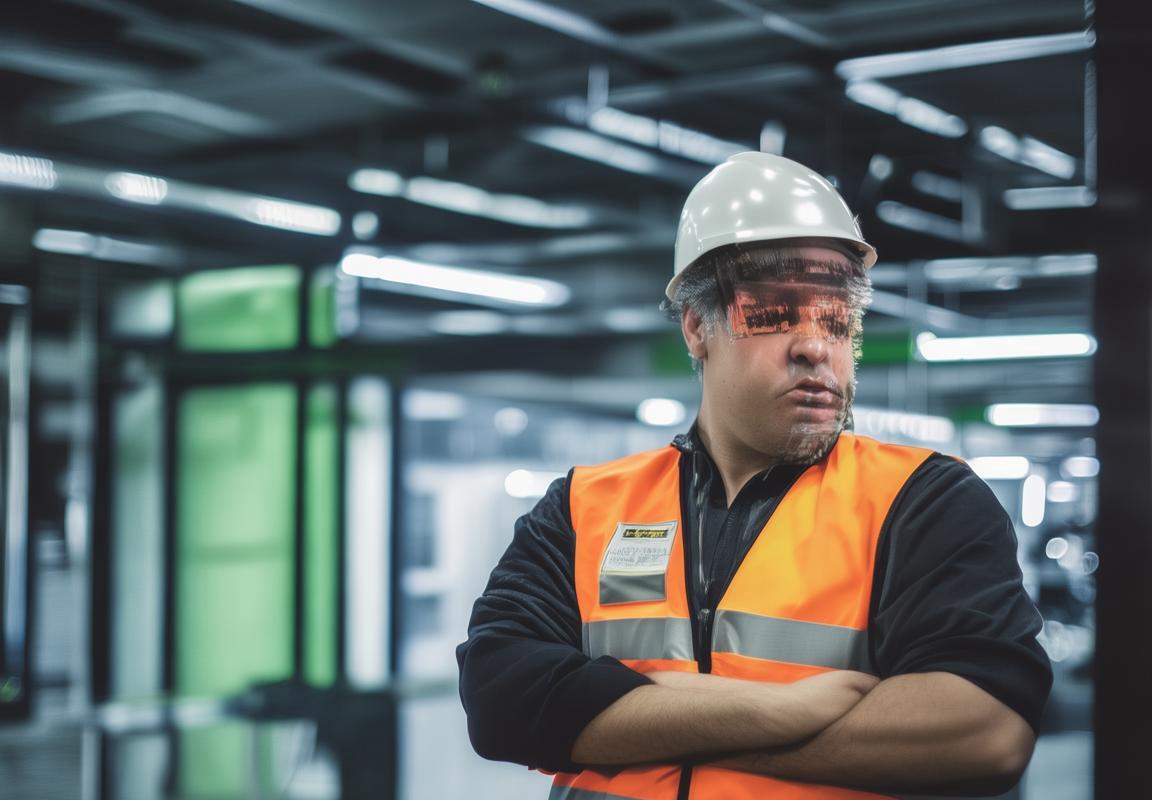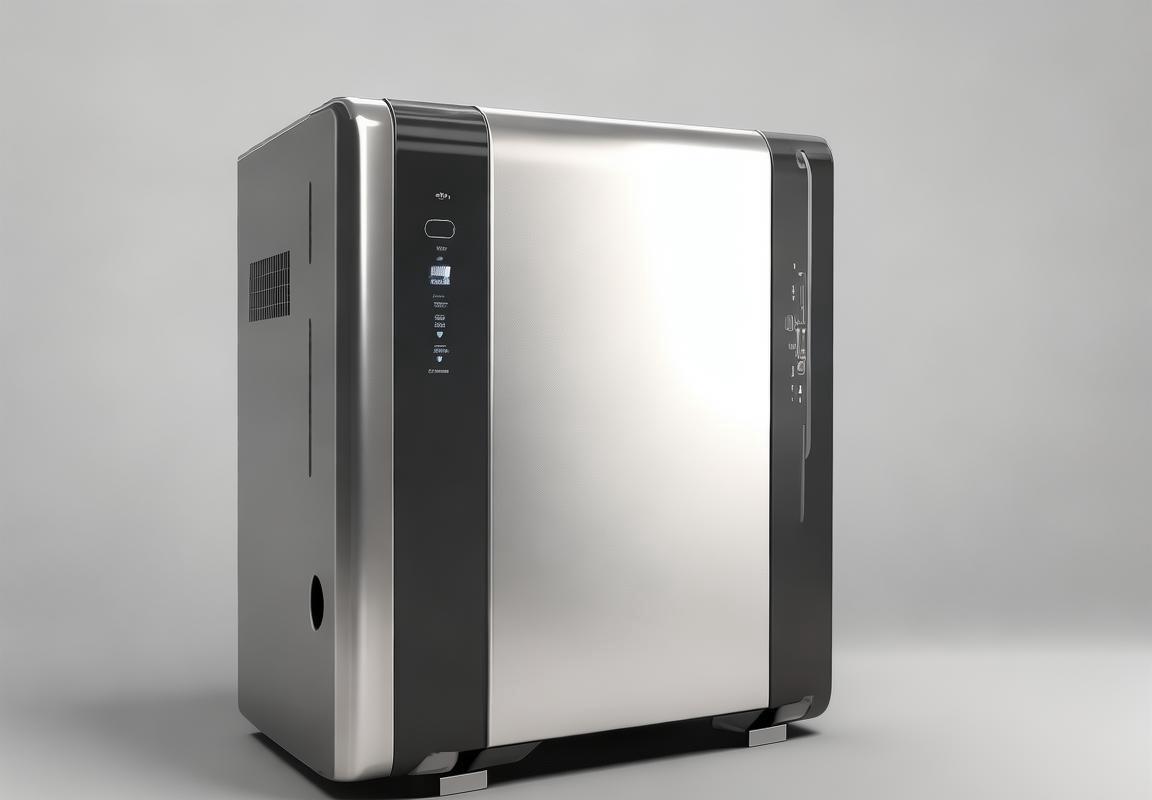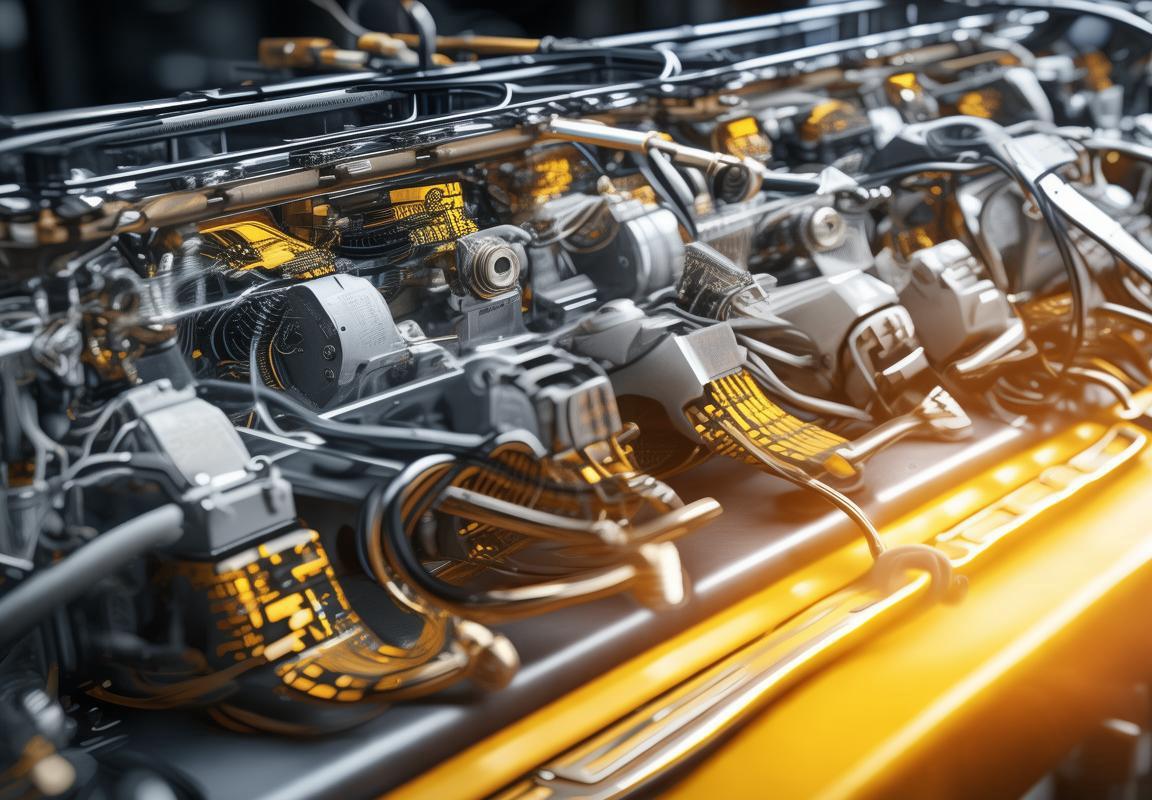In the ever-evolving landscape of environmental regulations, the RoHS 3 directive stands as a beacon of change for the heating system industry. As European consumers become increasingly aware of the environmental impact of their purchases, the demand for RoHS 3 compliant heating systems is on the rise. This shift not only underscores the importance of adherence to strict standards but also paves the way for a more sustainable future in the heating sector.
The Importance of RoHS 3 Compliance in Heating Systems
In the rapidly evolving landscape of the European heating system market, one factor stands out as a cornerstone of innovation and sustainability: RoHS 3 compliance. This regulatory framework, the third iteration of the Restriction of Hazardous Substances directive, has significant implications for manufacturers, consumers, and the environment. Let’s delve into why RoHS 3 compliance is not just a legal requirement but a strategic imperative for the heating system industry.
The environmental impact of electronic waste is a pressing concern, and RoHS 3 aims to address this by tightening restrictions on hazardous substances used in the production of heating systems. These substances, such as lead, mercury, and cadmium, can leach into the environment, posing health risks and ecological damage. By adhering to RoHS 3, manufacturers are taking a proactive stance against pollution, ensuring that their products are safer for both users and the planet.
One of the key benefits of RoHS 3 compliance is the enhancement of product quality. The stricter regulations push manufacturers to use alternative materials that are not only environmentally friendly but also durable and efficient. This means that heating systems that meet RoHS 3 standards are not just compliant; they are also likely to be more reliable and longer-lasting, offering peace of mind to consumers.
For businesses, the transition to RoHS 3 compliant heating systems can lead to cost savings in the long run. While the initial investment in new materials and production processes might be higher, the reduction in waste and the need for fewer repairs over the lifespan of the product can offset these costs. Moreover, companies that prioritize compliance can also tap into a growing market of environmentally conscious consumers who are willing to pay a premium for sustainable products.
Consumers, on the other hand, are becoming increasingly aware of the environmental impact of their purchases. A RoHS 3 compliant heating system not only aligns with their values but also provides them with a sense of security, knowing that the product they are investing in is less likely to harm the environment. This shift in consumer behavior is driving demand for compliant products and creating new opportunities for manufacturers to innovate and differentiate themselves in the market.
In the realm of global trade, RoHS 3 compliance also plays a crucial role. As Europe continues to lead the way in environmental regulation, manufacturers need to ensure that their products are not only compliant with local standards but also with those of other countries that may adopt similar regulations. This international aspect of RoHS 3 compliance can open up new markets and opportunities for companies that are able to navigate these complex regulatory landscapes.
The implementation of RoHS 3 also has the potential to foster innovation within the heating system industry. With the need to find alternatives to restricted substances, manufacturers are encouraged to develop new technologies and materials that are not only compliant but also more efficient and sustainable. This innovation can lead to breakthroughs in heating system design, energy efficiency, and overall performance.
However, the transition to RoHS 3 compliant heating systems is not without its challenges. For manufacturers, it requires a thorough review of their supply chains to ensure that all components meet the new standards. This can involve significant investment in new materials, production methods, and quality control processes. Additionally, there is a need for ongoing training and education to ensure that the entire workforce understands the requirements and implications of RoHS 3 compliance.
For consumers, the initial cost of RoHS 3 compliant heating systems may be higher due to the increased cost of materials and production. However, the long-term benefits, including lower maintenance costs and a smaller environmental footprint, can make this investment worthwhile. It’s a matter of balancing the initial outlay with the long-term savings and sustainability.
In conclusion, RoHS 3 compliance in heating systems is not just a regulatory necessity; it is a transformative force that is reshaping the industry. By prioritizing environmental responsibility, manufacturers can not only meet legal requirements but also drive innovation, attract environmentally conscious consumers, and position themselves for success in a more sustainable future. The path to RoHS 3 compliance may be challenging, but the rewards—both for the industry and for the planet—are substantial.

Understanding RoHS 3 and Its Impact
The RoHS 3 directive, or the Restriction of Hazardous Substances, is a significant regulatory framework that has been shaping the European market for heating systems. This update to the original RoHS directive, which was first introduced in 2002, brings with it stricter regulations and a broader scope, impacting not just electronic devices but also a range of other products, including heating systems. Here’s a deeper look into what RoHS 3 entails and how it affects the industry.
One of the most notable changes brought about by RoHS 3 is the expansion of the list of restricted substances. While the first RoHS directive targeted six substances, RoHS 3 adds four more, including brominated flame retardants, certain phthalates, and perfluorinated substances. This expansion means that heating systems, which often contain these materials for insulation and flame resistance, must now be designed to minimize or eliminate these hazardous substances.
The impact of these changes is twofold. Firstly, it requires manufacturers to invest in research and development to find alternative materials that meet the new standards. This can be a costly and time-consuming process, but it also opens up new opportunities for innovation in materials science. Secondly, it forces the industry to reassess its supply chain, ensuring that all components and materials used in the production of heating systems comply with the directive.
For consumers, the implications of RoHS 3 are clear. They can expect heating systems that are safer and more environmentally friendly. The reduction or elimination of hazardous substances means that these systems are less likely to pose health risks and are better for the environment. However, this shift also means that the cost of heating systems may increase as manufacturers adapt to the new regulations.
In terms of market dynamics, RoHS 3 is likely to accelerate the adoption of more sustainable and energy-efficient heating technologies. As manufacturers focus on compliance, they will also be looking to improve the overall performance of their products. This could lead to an increase in smart heating systems that not only meet the environmental standards but also offer enhanced user experience and energy savings.
The regulatory landscape is also changing with RoHS 3. The directive now includes provisions for the traceability of restricted substances throughout the product lifecycle. This means that manufacturers must be able to document the presence of these substances in their products and ensure that they are not present in excess of the prescribed limits. This traceability requirement adds another layer of complexity to the production process but is essential for ensuring compliance.
For businesses, the transition to RoHS 3 compliant heating systems is not just about meeting a legal requirement; it’s also about maintaining a competitive edge in the market. Companies that can demonstrate their commitment to environmental responsibility and safety are likely to attract more customers, particularly in the European Union where consumer awareness of environmental issues is high.
Moreover, the international implications of RoHS 3 are significant. While the directive is European in nature, its impact is global. Many non-EU countries have already adopted similar regulations, and others are considering doing so. This means that manufacturers must consider the broader international market when designing their products, ensuring that they are not only RoHS 3 compliant but also suitable for export to other regions.
In conclusion, RoHS 3 represents a significant shift in the regulatory landscape for heating systems. It requires manufacturers to reevaluate their products, supply chains, and production processes. For consumers, it promises safer and more sustainable heating solutions. While the transition may present challenges, it also opens up opportunities for innovation and market differentiation. As the industry adapts to these new standards, it will undoubtedly shape the future of heating technology in a more environmentally conscious direction.

Key Aspects of RoHS 3 Compliance for Heating Systems
The RoHS 3 directive, also known as the Restriction of Hazardous Substances, has been a significant regulatory shift in the European Union, particularly for the heating systems industry. Understanding the key aspects of RoHS 3 compliance is crucial for manufacturers, suppliers, and consumers alike. Here’s a closer look at what it entails for heating systems:
-
Expanded Scope: RoHS 3 has expanded the list of restricted substances, now covering a broader range of products, including medical devices and monitoring and control instruments. This means that heating systems, which are often equipped with electronic components, must now adhere to these new regulations.
-
New Substances: The directive introduces new substances that are considered hazardous, such as benzene, naphthalene, and polycyclic aromatic hydrocarbons (PAHs). These substances are often present in heating systems due to their use in plastics, rubber, and flame retardants.
-
Lower Limits: RoHS 3 has lowered the permissible limits for certain substances, such as lead, cadmium, mercury, hexavalent chromium, and polybrominated biphenyls (PBBs). This means that even trace amounts of these substances are no longer acceptable in heating systems.
-
Documentation and Traceability: Manufacturers must maintain detailed documentation to prove compliance with RoHS 3. This includes information on the materials used, the manufacturing process, and the final product. Traceability is also a key aspect, ensuring that any non-compliant components can be easily identified and removed from the supply chain.
-
Impact on Design and Materials: The compliance with RoHS 3 requires a reevaluation of the design and materials used in heating systems. Engineers must look for alternatives to restricted substances, which can sometimes affect the performance, cost, and lifespan of the equipment.
-
Testing and Certification: Heating systems must undergo rigorous testing to ensure they meet the RoHS 3 standards. This includes testing for the presence of restricted substances and verifying that the products do not pose a risk to human health or the environment. Certification by an authorized body is often required to demonstrate compliance.
-
Supply Chain Management: Compliance with RoHS 3 extends beyond the manufacturing process and involves the entire supply chain. Suppliers must also adhere to the directive, and manufacturers must ensure that their supply chain partners are compliant.
-
Cost Implications: Adhering to RoHS 3 can lead to increased costs for manufacturers. This includes the cost of developing new materials, conducting additional testing, and potentially modifying production processes. These costs are often passed on to consumers, which could affect the pricing of heating systems.
-
Market Access: Non-compliance with RoHS 3 can lead to products being banned from the European market. This not only affects sales but can also damage a company’s reputation. Ensuring compliance is essential for maintaining market access and competitiveness.
-
Consumer Safety and Environmental Protection: The primary goal of RoHS 3 is to protect human health and the environment by reducing the presence of hazardous substances in products. For heating systems, this means that consumers can use their products with confidence, knowing that they are safe and do not contribute to environmental degradation.
-
Training and Awareness: Employees involved in the design, production, and supply chain of heating systems must be trained on the requirements of RoHS 3. Awareness of the directive’s impact is crucial for ensuring that all aspects of the business are compliant.
-
Long-Term Strategy: Finally, compliance with RoHS 3 should be seen as part of a long-term strategy for manufacturers. As regulations continue to evolve, companies that can adapt and maintain compliance will be better positioned to succeed in the European market.
Understanding these key aspects of RoHS 3 compliance for heating systems is essential for anyone involved in the industry. It requires a holistic approach, from design and materials selection to supply chain management and market strategy. By embracing these requirements, businesses can not only meet regulatory standards but also contribute to a safer and more sustainable future.

The Market Shift: European Consumers and RoHS 3
The European consumer landscape is undergoing a significant shift, primarily driven by the introduction of RoHS 3, the latest iteration of the Restriction of Hazardous Substances directive. This new regulation has not only reshaped the manufacturing processes of heating systems but has also profoundly impacted consumer preferences and behaviors.
Consumers are increasingly aware of the environmental impact of the products they purchase, and RoHS 3 has played a pivotal role in this awakening. With stricter guidelines on the use of hazardous materials, consumers are now more inclined to seek out heating systems that are not only energy-efficient but also environmentally friendly.
The demand for RoHS 3 compliant heating systems has seen a surge, as consumers are no longer willing to compromise on quality or performance. They are looking for heating solutions that align with their values, and the market is responding accordingly. Brands that have embraced the RoHS 3 standards are finding that their products resonate with a broader consumer base.
Retailers and distributors are also feeling the ripple effects of this market shift. They are facing increased pressure to stock and promote heating systems that meet the new regulations. This shift has led to a more competitive market, with manufacturers and retailers vying for the attention of environmentally conscious consumers.
The introduction of RoHS 3 has also sparked a wave of innovation within the heating systems industry. Companies are investing in research and development to create new products that not only comply with the directive but also offer enhanced features and functionalities. This innovation is not just about meeting the legal requirements but also about providing consumers with better options.
Environmental certifications are becoming a key differentiator in the market. Consumers are not just looking at the compliance of RoHS 3 but also at other eco-labels that validate the sustainability of the heating systems they choose. This means that manufacturers need to not only comply with the directive but also demonstrate a broader commitment to environmental responsibility.
In the aftermath of RoHS 3, there has been a noticeable trend towards modular and customizable heating systems. Consumers are seeking heating solutions that can be tailored to their specific needs and preferences. This trend is a direct response to the demand for personalized and sustainable living solutions.
The impact of RoHS 3 is also being felt in the service sector. Installers and technicians are being trained to work with the new generation of heating systems, which often come with more advanced technology and materials. This training ensures that consumers receive the highest quality of service and installation.
Government initiatives and incentives are also playing a role in this market shift. Many European countries are offering subsidies and tax breaks for consumers who purchase RoHS 3 compliant heating systems. This not only encourages the adoption of sustainable products but also helps to offset the initial cost for consumers.
The shift in the market is not without its challenges. For smaller manufacturers and those in less developed regions, the cost of compliance with RoHS 3 can be prohibitive. However, there is a growing recognition that while compliance may come with short-term financial implications, it is an investment in the long-term sustainability of the industry and the planet.
Consumer behavior is changing, and with it, the entire heating systems market. The demand for RoHS 3 compliant products is not just a regulatory requirement; it is a reflection of a broader societal shift towards sustainability and environmental stewardship. As the market continues to evolve, it will be interesting to see how consumer preferences and market dynamics interact to shape the future of heating systems in Europe.

Advantages of RoHS 3 Compliant Heating Systems
RoHS 3 compliant heating systems are not just about adhering to regulations; they bring a host of advantages that can significantly impact consumers and the industry alike. Here’s a closer look at the benefits these systems offer:
The Environmental EdgeThese heating systems are designed with environmental considerations at their core. By limiting the use of hazardous substances like lead, cadmium, mercury, hexavalent chromium, and polybrominated biphenyls (PBBs), they contribute to reducing the environmental impact. This shift towards eco-friendliness resonates with consumers who are increasingly conscious of their carbon footprint and the health of the planet.
Health and SafetyRoHS 3 compliant heating systems prioritize the health and safety of users. The reduction in harmful substances means fewer risks of exposure to toxic materials, both during the manufacturing process and in the home. This not only safeguards the well-being of individuals but also aligns with the growing demand for safer consumer products.
Enhanced PerformanceThe compliance with RoHS 3 often involves the use of alternative materials and components that can enhance the performance of heating systems. These materials may offer improved heat efficiency, leading to lower energy consumption and reduced operational costs. Consumers benefit from a more reliable and energy-efficient heating solution.
Longevity and DurabilityThe use of high-quality, non-hazardous materials in RoHS 3 compliant heating systems can lead to increased durability. These systems are not only designed to last longer but also to withstand the test of time without compromising on performance. This longevity translates to fewer replacements and a more sustainable approach to home heating.
Regulatory ComplianceFor businesses, the ability to offer RoHS 3 compliant heating systems means staying ahead of the regulatory curve. As Europe continues to tighten environmental and safety standards, companies that can demonstrate compliance are more likely to secure contracts and maintain a competitive edge in the market.
Improved Market CredibilityConsumers are more likely to trust brands that prioritize environmental responsibility and safety. By investing in RoHS 3 compliant heating systems, manufacturers can build a reputation for reliability and ethical business practices. This credibility can lead to increased customer loyalty and market share.
Cost Savings Over TimeWhile the initial cost of RoHS 3 compliant heating systems may be higher, the long-term savings in energy bills and maintenance can offset this. These systems are designed to be efficient, which means they consume less energy and require less frequent repairs, resulting in substantial savings for homeowners and businesses.
Flexibility in Design and FunctionalityThe shift to compliant materials has also opened up new possibilities for design and functionality. Manufacturers can explore innovative solutions without compromising on the RoHS 3 standards, leading to a wider range of heating systems that cater to different consumer needs and preferences.
Innovation and Technological AdvancementThe push for RoHS 3 compliance has spurred innovation in the heating systems industry. As companies seek to meet the stringent requirements, they are also developing new technologies and methods that can improve the overall performance and efficiency of their products.
Increased Resale ValueRoHS 3 compliant heating systems can add value to properties. Home buyers are often looking for energy-efficient and eco-friendly features, and a compliant heating system can be a significant selling point, potentially increasing the resale value of a home.
In conclusion, the advantages of RoHS 3 compliant heating systems are multifaceted, touching on environmental responsibility, health and safety, performance, cost savings, market credibility, and innovation. As consumers and businesses alike become more environmentally conscious, these benefits are likely to become even more significant in the heating systems market.

Industry Insights: Expert Perspectives on RoHS 3
The European Union’s RoHS 3 directive has been a significant regulatory shift, impacting various industries, including the heating systems sector. Experts in the field offer a range of perspectives on how this new standard is reshaping the industry and what it means for manufacturers, consumers, and the environment.
Environmental Protection: A Stepping Stone to SustainabilityRoHS 3 aims to reduce the presence of hazardous substances in electrical and electronic equipment, including heating systems. Experts agree that this is a crucial step towards environmental sustainability. By limiting the use of harmful materials, RoHS 3 contributes to the reduction of e-waste and the preservation of natural resources.
Consumer Confidence: Trust in Quality and SafetyThe compliance with RoHS 3 is not just about meeting regulations; it’s also about building consumer trust. Experts note that consumers are increasingly aware of the environmental impact of their purchases. By choosing RoHS 3 compliant heating systems, manufacturers can assure customers that their products are safe and environmentally friendly, leading to enhanced brand loyalty.
Innovation and Technological AdvancementsThe introduction of RoHS 3 has spurred innovation within the heating systems industry. Experts believe that the need to replace restricted substances with safer alternatives has pushed manufacturers to develop new materials and technologies. This not only improves the performance and longevity of heating systems but also opens up new markets for eco-friendly products.
Regulatory Compliance: A Complex but Necessary ProcessNavigating the complexities of RoHS 3 compliance can be challenging for manufacturers. Experts stress that it requires a thorough understanding of the directive’s requirements, including the identification of restricted substances, the implementation of alternative materials, and the documentation process. However, they also highlight that this compliance is a necessary hurdle to ensure the industry’s continued growth.
Cost Implications: Balancing Environmental Goals and Business ViabilityWhile RoHS 3 is beneficial for the environment and consumer safety, it also has financial implications. Experts acknowledge that the transition to compliant heating systems may involve increased costs due to the development of new materials and the need for additional testing. However, they argue that these costs can be offset by long-term savings, such as reduced maintenance and operational costs, as well as the potential for government incentives and subsidies.
Global Market ConsiderationsThe impact of RoHS 3 extends beyond the European Union, as companies that export heating systems to the EU must comply with the directive. Experts point out that this creates a level playing field for all manufacturers, ensuring that products meet the same high standards regardless of where they are produced. This can also drive companies to seek global partnerships and expand their reach into new markets.
Long-Term Industry TrendsLooking ahead, experts predict that RoHS 3 will become the new norm in the heating systems industry. They foresee a trend towards more sustainable and eco-friendly products, with a greater emphasis on the life cycle of the equipment. This shift will likely lead to the development of more efficient and durable heating systems that are not only compliant with RoHS 3 but also with future environmental regulations.
Training and ExpertiseTo effectively comply with RoHS 3, experts emphasize the need for trained personnel within manufacturing companies. This includes staff who understand the directive’s intricacies and can ensure that all products meet the required standards. The demand for specialized knowledge and expertise is expected to grow, as companies recognize the importance of having a well-informed workforce.
ConclusionThe introduction of RoHS 3 has sparked a wave of change within the heating systems industry. Experts believe that while it presents challenges, it also offers opportunities for innovation, cost savings, and market expansion. By embracing RoHS 3 compliance, manufacturers can position themselves as leaders in the sustainable and environmentally conscious sector, ensuring a competitive edge in the global market.

Case Studies: Successful RoHS 3 Implementation
In the pursuit of environmental responsibility and product safety, companies across various industries have been embracing the RoHS 3 directive. Here, we delve into a few case studies showcasing successful RoHS 3 implementations in the heating systems sector.
The heating systems company, HeatTech Innovations, faced a significant challenge when the RoHS 3 directive was introduced. They had to ensure that their products, which were widely used in residential and commercial settings, were free from restricted substances. Their approach involved a thorough material assessment and supplier collaboration.
HeatTech Innovations started by conducting a comprehensive inventory of all the components used in their heating systems. This inventory was meticulously analyzed to identify any materials that fell under the RoHS 3 directive’s restricted list. Once these materials were pinpointed, the company set about finding alternative components that met the new standards.
Collaboration with suppliers was key to this process. HeatTech Innovations engaged in open dialogue with their suppliers to understand the implications of RoHS 3 and to source compliant materials. This partnership led to a streamlined supply chain, ensuring that only RoHS 3 compliant parts were used in their products.
Another case in point is EcoHeat Systems, a company specializing in energy-efficient heating solutions. They recognized the importance of RoHS 3 compliance early on and took a proactive approach to adapt their manufacturing processes.
EcoHeat Systems began by investing in new testing equipment to ensure that their products were free from the restricted substances. They also trained their quality control team to rigorously inspect each product during the manufacturing process. This internal quality assurance helped them maintain compliance with RoHS 3.
The company also reached out to their design team to modify the product specifications to accommodate RoHS 3 compliant materials. This required a redesign of certain components but ultimately resulted in a more sustainable and eco-friendly heating system.
In the case of Global Warming Solutions, a leading manufacturer of smart heating systems, the RoHS 3 implementation was a collaborative effort across the entire organization. They understood that compliance with the directive would not only benefit the environment but also enhance their brand reputation.
Global Warming Solutions initiated a cross-departmental task force to oversee the implementation of RoHS 3. This team consisted of engineers, quality assurance specialists, and purchasing managers. Their collective expertise ensured that every aspect of the manufacturing process was evaluated for RoHS 3 compliance.
The company also conducted a lifecycle assessment of their products to identify potential areas for improvement. This assessment led to the development of a new range of heating systems that were not only RoHS 3 compliant but also more energy-efficient and durable.
For HeatSave Solutions, a small but innovative heating systems company, the RoHS 3 directive was a catalyst for innovation. They saw it as an opportunity to differentiate their products in a competitive market.
HeatSave Solutions invested in research and development to create a new line of heating systems that were not only RoHS 3 compliant but also featured cutting-edge technology. This new range included smart thermostats and heating elements that were free from restricted substances.
The company’s commitment to RoHS 3 compliance also extended to their marketing and sales strategies. They emphasized the environmental benefits of their products in their advertising, which resonated with eco-conscious consumers and businesses.
These case studies highlight the diverse strategies employed by heating systems companies to successfully implement RoHS 3. From comprehensive material assessments and supplier collaboration to innovative design and lifecycle assessments, these companies have shown that compliance with RoHS 3 is not just a legal requirement but an opportunity to enhance product quality and sustainability.

Challenges and Solutions in Achieving RoHS 3 Compliance
Navigating the complexities of RoHS 3 compliance can be daunting for heating system manufacturers, but understanding the challenges and implementing effective solutions is crucial for staying competitive in the European market. Here’s a closer look at the hurdles and the strategies that can help overcome them.
Manufacturers often face the challenge of identifying and removing hazardous substances from their heating systems. This process requires a thorough audit of all components, from the smallest electronic parts to the larger mechanical elements. Ensuring that all materials meet the stringent RoHS 3 standards demands a meticulous approach to supply chain management.
The transition to RoHS 3 compliant materials can be costly. Suppliers may need to invest in new technologies or revise existing processes to eliminate restricted substances. For smaller companies, this financial burden can be particularly challenging, potentially leading to a reevaluation of pricing strategies and the need for cost-effective alternatives.
One of the most significant challenges is the time required to bring products in line with RoHS 3. Compliance involves not only changing materials but also updating documentation, conducting new tests, and possibly redesigning products. This timeline can stretch into months, delaying the launch of new products and affecting the company’s market positioning.
Another hurdle is the complexity of testing. RoHS 3 requires rigorous testing to confirm that no restricted substances are present in the final product. This can be a complex and costly process, especially for companies that are not equipped with the necessary testing facilities. Collaborating with external laboratories or investing in in-house capabilities can be a viable solution, but it adds another layer of complexity to the compliance journey.
Regulatory compliance is not just about meeting the standards; it’s also about maintaining them. Companies must ensure that their supply chains remain compliant over time, which can be difficult as suppliers may change or new materials may enter the market. Implementing a robust quality management system is essential to monitor and verify compliance continuously.
In terms of solutions, one effective approach is to work closely with suppliers. By fostering strong relationships, manufacturers can encourage suppliers to adopt RoHS 3 compliant materials and processes. This collaboration can lead to more streamlined supply chains and potentially lower costs through bulk purchasing or shared research and development efforts.
Investing in research and development is another key strategy. By investing in innovation, companies can develop new materials or processes that are inherently compliant with RoHS 3. This not only ensures compliance but can also lead to improvements in product performance and sustainability.
Training and education are critical for ensuring that all employees understand the importance of RoHS 3 compliance. Regular training sessions can help employees recognize restricted substances and understand the company’s compliance protocols. This knowledge is essential for maintaining a culture of compliance within the organization.
Technology can also play a significant role in achieving RoHS 3 compliance. Advanced inventory management systems can track materials and components throughout the production process, ensuring that only compliant parts are used. Similarly, software solutions can help manage the documentation and reporting requirements of RoHS 3 compliance.
Lastly, companies should consider the long-term benefits of compliance. While the initial investment may be significant, adhering to RoHS 3 standards can enhance a company’s reputation, improve its ability to access new markets, and contribute to a more sustainable future. By viewing compliance as an opportunity for innovation and improvement, manufacturers can turn challenges into competitive advantages.

The Road Ahead: Predictions for the Future of RoHS 3 in Europe
In the evolving landscape of European regulations, the RoHS 3 directive is poised to reshape the future of electronics, including heating systems. As we look ahead, several key predictions emerge, reflecting the potential trajectory of RoHS 3 in Europe.
Manufacturers are likely to see a significant shift in their supply chains as they adapt to the stricter RoHS 3 standards. This means a more rigorous selection of materials and components, ensuring that all products meet the new requirements for restricted substances like lead, mercury, cadmium, hexavalent chromium, polybrominated biphenyls, and polybrominated diphenyl ethers.
The market for RoHS 3 compliant heating systems may initially face a price increase as manufacturers invest in new technologies and materials that adhere to the directive. However, over time, as production scales up and costs decrease, prices are expected to stabilize, making compliant products more accessible to consumers.
European consumers will become more discerning when it comes to the sustainability and environmental impact of the products they purchase. With RoHS 3, consumers can expect clearer information on the presence of harmful substances in heating systems, leading to a preference for brands that prioritize compliance.
Regulatory bodies will likely enforce RoHS 3 more stringently, imposing fines and penalties on non-compliant manufacturers. This enforcement will not only protect public health but also create a level playing field for businesses that invest in compliant technologies.
Innovation in heating system design will accelerate as companies seek to develop products that are not only RoHS 3 compliant but also more energy-efficient and environmentally friendly. This could lead to a wave of new technologies, such as the integration of renewable energy sources and smart control systems.
The integration of the RoHS 3 directive with other environmental regulations, such as the Ecodesign Directive, may create a more unified approach to product design and manufacturing. This convergence could streamline compliance processes and encourage a holistic approach to sustainability.
Collaboration between industry stakeholders, including manufacturers, suppliers, and regulatory agencies, will become crucial to ensure a smooth transition to RoHS 3 compliance. Joint initiatives and training programs could help to disseminate best practices and facilitate the adoption of new standards.
Globalization will play a role in the implementation of RoHS 3, as European companies expand their markets to other regions. The need to meet RoHS 3 standards may drive a more unified regulatory environment on a global scale, as other countries look to Europe as a leader in environmental regulation.
Training and certification programs are expected to become more prevalent, ensuring that individuals working in the heating system industry are knowledgeable about RoHS 3 requirements. This will help to maintain high standards across the supply chain and ensure that products meet the directive’s strict criteria.
The long-term impact of RoHS 3 could extend beyond the heating system industry, influencing other sectors as they too recognize the benefits of reducing harmful substances in their products. This could lead to a broader movement towards more sustainable and environmentally responsible manufacturing practices.
As the European Union continues to update its environmental regulations, RoHS 3 will serve as a model for future directives. The lessons learned from implementing RoHS 3 will inform the development of subsequent regulations, potentially setting a precedent for other countries to follow.
In conclusion, the road ahead for RoHS 3 in Europe is one of adaptation, innovation, and a stronger commitment to environmental sustainability. The challenges of compliance will be met with solutions that not only protect the environment but also drive technological advancements and consumer demand for more sustainable products.

Conclusion: Embracing RoHS 3 for a Sustainable Future
In embracing RoHS 3 for a sustainable future, the stands at a pivotal crossroads. The new regulations are not just a compliance challenge but an opportunity for innovation and growth. As we reflect on the journey thus far, it’s clear that the path ahead is filled with complexities, yet also brimming with potential.
Transitioning to RoHS 3-compliant heating systems demands a shift in mindset. Manufacturers must move beyond simply adhering to standards and instead focus on designing products that are not only compliant but also environmentally friendly and cost-effective. This shift is already prompting a wave of creativity in the industry, with companies exploring new materials and production methods that reduce waste and enhance sustainability.
The consumer’s role in this transition cannot be overstated. As awareness of environmental issues grows, consumers are increasingly seeking out products that align with their values. RoHS 3-compliant heating systems, with their reduced reliance on hazardous substances, are becoming a more attractive option. This demand will only continue to rise, putting pressure on manufacturers to deliver.
Collaboration across the supply chain is crucial. Suppliers need to ensure that the raw materials used in heating systems meet RoHS 3 requirements, and manufacturers must work closely with them to ensure seamless integration. This collaboration is not just about compliance; it’s about fostering a culture of responsibility that extends from the production floor to the end-user.
Regulatory compliance is a moving target. As Europe continues to refine its environmental policies, the industry must stay abreast of changes and be prepared to adapt. This means investing in research and development to anticipate future requirements and stay ahead of the curve. Companies that can pivot quickly and efficiently will be the ones that not only survive but thrive in the RoHS 3 era.
Financial implications are a significant concern for many companies. The costs associated with redesigning products, sourcing new materials, and ensuring compliance can be substantial. However, these investments are not without returns. By producing RoHS 3-compliant heating systems, manufacturers can tap into new markets and secure contracts with environmentally conscious clients who are willing to pay a premium for sustainable products.
Employee training and education are vital components of the transition. Employees need to understand the new standards and how they impact their work. This knowledge not only ensures compliance but also fosters a sense of shared responsibility among the workforce. As employees become more engaged with the sustainability mission, they are more likely to contribute innovative ideas that can further improve the process.
The impact of RoHS 3 on product design cannot be overlooked. With restrictions on the use of certain materials, designers must find creative solutions that maintain functionality while meeting environmental standards. This has led to the development of new technologies and materials that are not only compliant with RoHS 3 but also offer improved performance and efficiency.
Public perception plays a role in shaping the industry’s future. As consumers become more aware of the environmental benefits of RoHS 3-compliant heating systems, they are more likely to support the companies that produce them. This positive feedback loop can drive demand and encourage other manufacturers to follow suit.
Long-term sustainability is a key consideration. Companies that invest in RoHS 3 compliance are not just addressing today’s regulations; they are also positioning themselves for the future. As environmental concerns continue to rise, the market for sustainable products will grow, and those who have made the transition will be well-positioned to capture the benefits.
The road to a sustainable future is not without its hurdles, but the potential rewards are substantial. By embracing RoHS 3, the industry can lead the way in reducing environmental impact, fostering innovation, and ensuring long-term viability. It’s a journey that requires commitment, creativity, and collaboration, but the destination—a more sustainable and responsible future—is worth the effort.